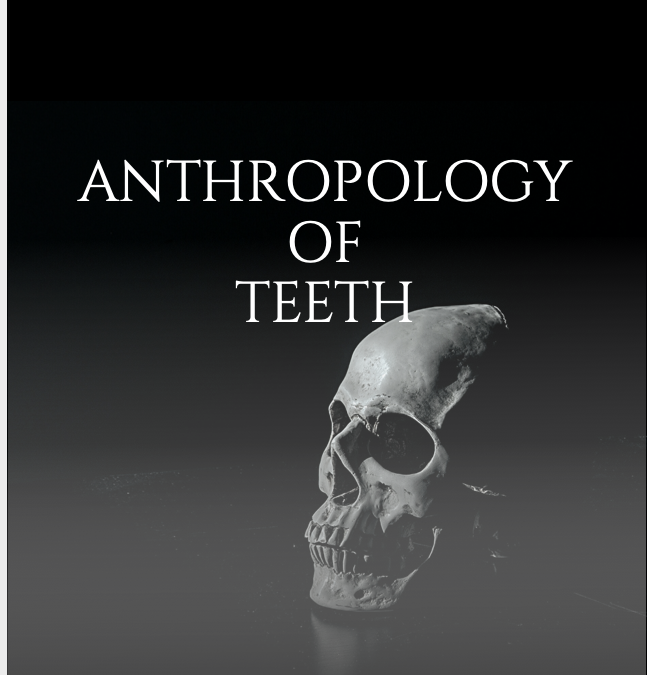
May 25, 2021
It may surprise you to know that our wonderful Dr. Brunacini loves to learn about teeth! Not just as a dentist, but also as an anthropologist… Dr. Brunacini is fascinated by the field of Dental Anthropology. We had to get to the root of the matter, so we’re kicking off Part 1 of an interview series with Professor Brunacini to learn more about the history of our teeth and Dental Anthropology.
What is Dental Anthropology?
Dr. Bruncaini: Dental anthropology is a branch of physical anthropology that focuses on the development, evolution, and variability of teeth and related orofacial structures. In other words, it’s about the history of teeth in humans. What more could a dentist ask for in a field of study?
What interests you about this field?
Dr. Brunacini: A lot! By learning about how structures in the mouth form, we can learn how we are related to other animals. We can also learn about the history of different cultures throughout time. For example, we can learn about the foods they ate or how healthy they were overall.
What is something that surprised or fascinated you in your research?
Dr. Brunacini: I had no idea how long basic dentistry has been around. There is a record of beeswax dental fillings from 6500 years ago! It is incredible to witness the drive of humans to innovate and try to improve their well being by using their environment. This is something we still do today.
Where can people learn more?
Dr. Brunacini: People who are interested in learning more can visit The Dental Anthropology Association website. It’s a great resource. Or patients can feel free to ask me more at their next appointment!
Thank you, Dr. Brunacini!
We’ll continue this exploration and delve a little deeper into this interesting topic in the coming months. If you have a question about dental anthropology or need to schedule your next appointment please give us a call at 207.781.5900.
Apr 20, 2021
April is Oral Cancer Awareness Month, which represents an opportunity for dental professionals to raise awareness about early detection and treatment for their patients. According to the Oral Cancer Foundation, although an estimated 54,000 new cases of oral cancer will be diagnosed this year, “Regular oral cancer examinations performed by your oral health professional remain the best method for detecting oral cancer in its early stages.” At Falmouth Dental Arts, we’ve had a long-standing commitment to oral cancer screening for our patients. However, you may have some questions about oral cancer or how Dr. Brunacini, Dr. Karagiorgos, and the hygienists perform screenings during your appointment. We recently posted a video on our Facebook page, and wanted to provide some more basic information about oral cancer and our screening procedures.
Some of the risk factors for oral cancer include:
- Being over the age of 40.
- Tobacco use – heavy cigarette use (especially over the age of 50) has been linked to a higher incidence of oral cancer.
- Alcohol use – heavy drinkers of alcohol are more likely to develop oral cancer than nondrinkers.
- Sun exposure – lip cancers are associated with excessive sun exposure and a failure to use sunscreen.
- Human Papillomavirus (HPV) – although HPV is an extremely common virus that will usually clear on its own, a small percentage of those with HPV will go on to develop oral cancers. Men are more likely than women to develop oral cancer as a result of HPV. A vaccine is available (up to age 45), which prevents many strains of HPV, including those which increase the risk for oral cancers.
Warning Signs of Oral Cancer
Patients should let us know if they see any white patches in the mouth or gums or increased bleeding, as these can sometimes be signs of oral cancer. A good rule of thumb is, if you notice any recent changes to your mouth, teeth or gums, or experience any pain or tenderness, it is always a good idea to let us know. There is no such thing as a silly question!
Screening and Early Detection
Oral cancer screening is an important step in identifying cancer as soon as possible. When treated early, oral cancer has an estimated 80-90% survival rate. Regular dental care is a first line of defense against oral cancer. As your dental care partners, we are an essential part of your healthcare team, and see many of our patients at least twice a year!
What to Expect from Your Oral Cancer Screening
We screen our patients for oral cancer at every hygiene appointment. Our screening methods typically include a simple visual exam of the soft tissues of the mouth. We will examine the gum tissue, lips, cheeks, and tongue. We will also palpate (gently press on) areas of the face and neck to check for any nodules or lumps. If there is an area of concern, we may offer to do a VELscope screening. VELscope is a safe, non-invasive early detection screening device that emits a blue light that quickly allows our clinicians to identify abnormal cells before they are visible to the naked eye. The graphic below demonstrates the difference between healthy cells (Normal Epithelial Cells) and abnormal cells (Abnormal or Dysplastic Epithelial Cells), that become visible under the Blue Excitation Light.
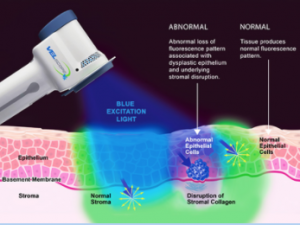
If we have any reason for concern based on our visual exam and screening, the next step would be a referral to an oral surgeon for additional consultation. An oral surgeon may decide to perform a biopsy of the area for further evaluation. Most of the time, a biopsy will rule out oral cancer. However, if the biopsy is positive for precancerous or cancerous cells, additional treatment may be necessary. Throughout the evaluation and referral process, we will remain involved every step of the way to provide support and follow-up care. If you have any questions or concerns, please feel free to contact us, as we’re here to help!
Check out our new website – its new features are sure to make you smile!
Apr 10, 2021
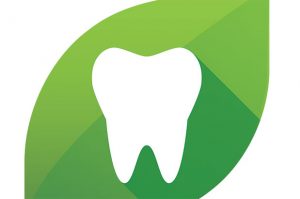
Image courtesy of www.seattlemag.com
Earth Day is a good reminder for us to be mindful of the ways our habits impact the environment…even our healthy habits. At FDA, we make an effort to go green when we can and know many of our patients are making the same effort. There are steps we can all take to improve our environmental footprint as we improve our oral health. Here are 3 ways you can make your oral health routine more eco-friendly:
Turn off the Water While You Brush.
This tip is an oldie but a goodie – turn off the tap while brushing your teeth. This simple act can save up to 8 gallons every day and over 200 gallons a month! Not only will you be conserving water and helping the planet, but you’ll also be saving money on your water bills. Turn off that tap!
Explore Green Floss Alternatives.
We talk about it constantly – dental floss is an important component in your oral health care routine. Flossing once a day helps prevent gum disease and cavities. It truly is one of the best things you can do for your oral health, but it’s not necessarily one of the best things for the planet. Most dental floss is made out of nylon and comes in plastic containers, which all end up in the landfill, or worse, the ocean. There are sustainable alternatives, however. Look for silk dental floss or consider a Water Flosser. Here is a resource for exploring some eco-friendly alternatives. Take care of your gums while you reduce the amount of waste in your dental routine!
Make Your Own Toothpaste.
DIY toothpaste? Yes! We’ve posted recipes on our blog before and in honor of Earth Day this year we thought we’d share one of our all-natural recipes that will leave your mouth feeling fresh and leave less plastic waste behind. Most of these toothpaste ingredients can be found at any health food store or online retailer:
Coconut Oil Toothpaste
Ingredients
- ½ cup coconut oil
- 2 to 3 TBS baking soda
- 2 small packets of stevia powder
- 15 to 20 drops of peppermint or cinnamon essential oil (for flavor)*
- 10 drops myrrh extract (optional for flavor)*
Melt or slightly soften the coconut oil, then mix in all other ingredients and stir well. Mix using a fork if you are using semi-hard coconut oil and use a spoon for liquid coconut oil. If you melted the coconut oil using a heat source, stir the mixture as it cools to prevent the baking soda from separating.
*Essential oils can be potent, so start with a few drops then add more to taste. Make sure to use therapeutic-grade essential oils that are safe to ingest. Feel free to substitute other essential oils if you prefer.
At FDA we strive to take care of the planet as we provide the best oral health care for our patients. From using digital records and x-rays for our patients to our mercury-free fillings to our commitment to Holistic Dentistry, we are continually finding ways to be more sustainable in our practice. This Earth Day, we hope you join us in making an effort to improve your oral health routine for the health of the environment. If you have any questions about other ways to be eco-friendly while caring for your smile or need to schedule your next appointment, give us a call at 207.781.5900.
Mar 23, 2021

*Image courtesy of www.thespruce.com
Even though there may still be snow on the ground in Maine when you read this, Spring is just around the corner! With each wonderous bulb that pops up, Spring brings the promise of renewal and growth. Why not apply the spirit of Spring to your smile? Cosmetic procedures can rejuvenate your teeth and give you the smile of your dreams! We offer a variety of options for patients looking to brighten, whiten, or fix their teeth, many of which can be accomplished in as little as one or two appointments. Here are 5 ways we can help you improve your smile:
Porcelain Veneers
If you have chipped, worn, or stained teeth, porcelain veneers can provide a sleek and attractive option for changing their shape, color, and length. Veneers are ultra-thin porcelain shells that are shaped and fixed to your natural teeth, and can be custom fitted to your teeth in just two short visits. They look and feel just like your other teeth, and don’t require special or additional care.
If the condition or color of your teeth has been detracting from your everyday life, porcelain veneers may be the perfect solution for you. Have a short conversation with Dr. Brunacini or Dr. Karagiorgos to learn more!
Teeth Whitening
Teeth whitening is one of the most well known cosmetic treatments, and we offer both in-office whitening and at-home options. Teeth whitening is a safe way to achieve the bright smile you’ve always wanted, and can be done in just a few treatments. However, whitening is not for everyone. For example, whitening previously restored teeth, especially in the front part of the mouth, can make the fillings more noticeable, since the enamel will whiten while the fillings resist the bleach. Also, bleaching can also be uncomfortable if you have sensitive teeth. Dr. Brunacini or Dr. Karagiorgos can work with you to determine if bleaching is right for your teeth.
Dental Bonding
Small chips and discolorations in your teeth are often unnoticeable to others, but we understand that seeing the same stains and fractures everyday can become a significant irritation. Dental bonding is an affordable and painless procedure that can address many different cosmetic flaws or injuries, by smoothing out or repairing damaged teeth. We use dental bonding to sculpt individual teeth with a special tooth-like material that looks, acts, and feels like the real thing. Bonding can also be completed very quickly, as the composite resin adheres quickly to your teeth and can then be polished and shaped to match your other teeth. This is a great option for a lot of our patients!
Dental Implants
If you have missing teeth, there may be a better solution for you than wearing uncomfortable dentures. Many people believe that if they can still eat, then tooth loss isn’t an issue; however, missing teeth leads to a loss of support in the mouth and forces other healthy teeth to drift. Dental implants provide a great long-term option for replacing lost teeth in a safe and predictable way, as they are designed to last a lifetime.
You may be better suited for implants than you realize as your general health is a better indicator than your age. We aim to make every process as comfortable and safe as possible, and we can help you to determine whether implants are the right choice for you.
Invisalign
Did you put off getting braces when you were younger? Do you notice changes in the way your teeth fit together?
Falmouth Dental Arts can help you correct crooked teeth, gaps, overbites, or other bite issues with Invisalign treatment. Invisalign can be a great alternative to traditional wired braces. More than simply giving you a straighter smile, Invisalign can also enhance your ability to chew and even alleviate some speech impediments. Straighter teeth are also easier to clean and give many people some added confidence behind their smile.
There are several clear tray straightening products. Invisalign is the one we recommend and use at Falmouth Dental Arts. Using the world’s most advanced clear aligning process, Invisalign can start transforming your smile from the first fitting!
If you want to rejuvenate your smile and have any questions about if a cosmetic procedure is the right option for you, please give us a call at 207.781.5900! We are your partner in oral health care and love to help patients have a healthy, beautiful smile!
Mar 15, 2021
We are lucky to have an incredible team of Dental Assistants: Lisa, Pat, Mary, Mirela, and our newest addition Chelsey! We are thrilled to welcome another amazing assistant to our team!
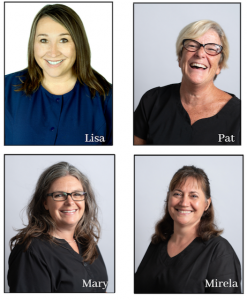
You may have met one of our dental assistants while experiencing their compassionate care as they assisted Dr. Brunacini or Dr. Karagiorgos with one of your dental procedures. They are all committed to improving the patient experience so you can feel relaxed during your appointment, and they love to help people have beautiful smiles. They are a key part of our practice and really are a dream team! In honor of Dental Assistant Recognition Week this March, let’s hear some of what they have to say about their important work:
Lisa
“The people at FDA–from top down–are positive, caring, friendly, and helpful. It’s a joy to come to work each day!”
Lisa has been helping patients for 25 years. For Lisa, one of the most fulfilling parts of her job is helping patients improve their smiles with cosmetic dentistry. Lisa loves attending continuing education courses for cosmetic dentistry so she can be current with all the latest procedures.
Pat
“I love helping patients feel relaxed and at ease during their dental appointments. There are people who dread coming and some are very fearful. I understand their anxiety. I hope my presence, compassion, and experience as a Dental Assistant helps everyone have a better experience when coming here.”
Pat has been a Certified Dental Assistant for over 17 years and handles patient radiology and assists chairside for cosmetic and restorative procedures.
Mary
“Our motto is, ‘Have fun while doing great work!’ It’s all about working as a team to do the best for our patients and keep them relaxed. Everyone here helps each other.”
Mary has worked in the dental field since 1995 and is committed to communicating with her patients. “We explain things and show examples to our patients. I think this really helps them understand and feel more at ease. They’ll ask more questions,” says Mary. She truly enjoys helping people and loves seeing the results of a successful treatment. “I love knowing that our patients feel good about themselves afterward. They see the success, too.”
Mirela
“Everyone at FDA really cares – about patients and each other – and that’s what makes it work. When your co-workers create a comfortable environment for you then you can make it more comfortable for your patients in turn. It makes for a very warm and caring atmosphere.”
Mirela has worked in the dental field since 2003. With a background in pediatric dentistry, Mirela is committed to helping patients feel comfortable while receiving procedures. You can find Mirela assisting chairside and helping with laboratory responsibilities.
Chelsey. 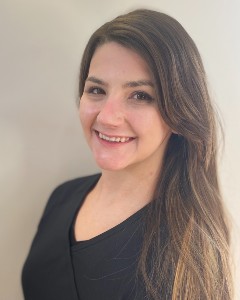
“I love seeing a patient’s mood change from when they sit in the doctor’s chair to when they leave the office…whether it’s a restorative case or a cosmetic case, the patient leaves much happier than when they first arrived!”
Chelsey joined FDA in 2020. With childhood dreams of entering the dental field and a formative experience traveling to Central America on a mission trip to assist a dentist with restorative work, Chelsey is now starting her new career with hands-on-training and support from the team of knowledgeable and compassionate medical professionals at FDA.
Thank you, Lisa, Pat, Mary, Mirela, and Chelsey! We are grateful for your commitment to patient care and dental excellence!
If you have questions about a dental procedure that our team of outstanding Dental Assistants help provide, or need to schedule your next appointment, please give us a call at 207.781.5900. We look forward to helping you have a healthy, happy smile!






